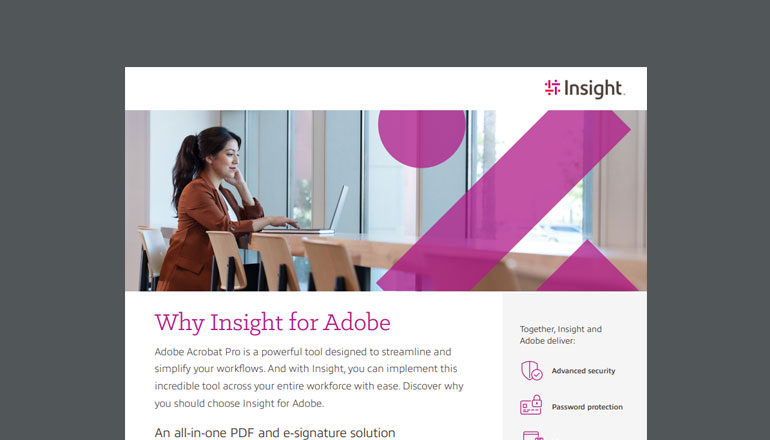Article Software as a Service: What Growing Companies Need to Know
Cloud-based solutions offer many advantages for small to medium businesses. Discover four Software as a Service (SaaS) benefits that can improve your operations.
By Steve Solomon / 27 Jul 2019 / Topics: As a service Software

All industries have been steadily embracing cloud computing. Now, thanks to the internet, countless cloud-based solutions are helping businesses run smarter.
Topping the list is Software as a Service (SaaS) . This method of software delivery and licensing is accessed online via a subscription instead of purchased and installed on individual computers.
SaaS provides software applications to end users over the internet, using almost any device. High-speed internet connections allow large volumes of data to be sent between local computers and external servers. The SaaS provider hosts the company’s apps and delivers them to the end user through the cloud.
Businesses can typically subscribe to SaaS on a monthly or annual basis. That eliminates the need for large upfront payments and binding contracts. Users also have the option to end a subscription when the services are no longer needed.
Because cloud-based apps are continually updated, SaaS often saves valuable business resources that would otherwise go toward updating individual computers.
SaaS advantages
SaaS has become a cost-effective alternative because it offers significant benefits over installed software. It helps maximise a limited IT budget while providing access to up-to-date technology and professional support. A low entry cost allows many small to medium businesses to enjoy the benefits of this cloud-based technology, including:
- No hardware to maintain — Organisations don’t have to invest in hardware or install, configure and run apps. SaaS also relieves maintenance, support and licensing tasks.
- Cross-platform scalability — SaaS solutions are accessed through a web browser on mobile devices, which boosts productivity and increases availability to remote employees.
- Automatic updates — Because service providers are responsible for keeping solutions up to date, SaaS offers time-saving convenience.
- Adaptability — SaaS apps are highly expandable, allowing easy access to more services and features as companies grow.
- Easy employee integration — There’s no need to license or install software for new employees. Subscriptions can also be terminated for departing employees.
4 operational benefits
In addition to those advantages, SaaS solutions in key functions such as accounting, human resources, administration and supply chain management can be major differentiators for your company. Here are specific areas of operation where you could see a dramatic impact:
- Managing documents
Many businesses still depend on hard copies of files. However, paper documents can be physically damaged or compromised. Cloud-based solutions eliminate the need for paper files while offering automated backups and strong cybersecurity procedures.
- Finance
Financial technology (fintech) is changing the way money is handled. Many SaaS payment solutions can transform mobile devices, such as tablets, into Point-of-Sale (POS) machines. These SaaS options process card-based payments and easily integrate with digital wallets and online payment providers. This reduces the inefficiency of invoicing.
- Sales and marketing
SaaS tools help optimize activity for business opportunities via social media, email automation and conversational messaging. The services allow users to create and launch campaigns that are customized to a prospect’s profile.
- Supply chain and inventory
SaaS management solutions are readily available to companies of all sizes. For example, Radio Frequency (RF) trackers can simplify inventory management through real-time tracking of equipment, products and materials. RF readers identify tags that are attached to individual boxes, thereby increasing inventory accuracy and control.
Investigate your options.
One difficulty in embracing SaaS is finding a company with the necessary resources to take the guesswork out of managing it.
When selecting an IT partner for your organisation, look for a provider with comprehensive software management tools and a wide selection of licenses and vendors. This helps ensure audit prevention, strong defense and easy access to necessary licenses — while also minimising business risk, simplifying asset management and reducing costs.
The future of SaaS is bright and offers more flexibility and scalability than ever. Cloud-based solutions can potentially place small to medium companies on the same technology playing field as major enterprises.




